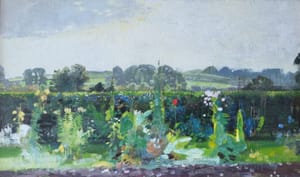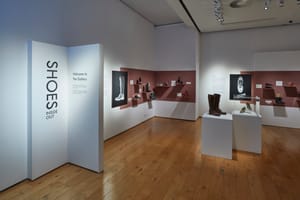Hampshire Cultural Trust has received funding from National Lottery Heritage Fund to help reimagine the Allen Gallery and its nationally significant ceramic collection. As part of this project, we are researching and discovering the collections’ untold stories.
For this month’s article we’re visiting the Farnham pottery owls to explore their connection to W H Allen.
Farnham Owl Ware
For almost a hundred years, Farnham Pottery produced their most popular glaze-ware items; pottery owl ware. Featuring jugs, vases, bowls, pots, mugs, and wash basins among other functional items, what distinguished them was their owl faces – many had just one face, but some had two or three. The base pot was thrown on a wheel, and the owl features were added afterwards, with feathers created using a comb or pinecones, and the eye sockets created with a cotton reel.
We have five Farnham owl ware entries on our object database, totalling 8 objects. Three of these are on display at the Allen Gallery – two glazed jugs in green and blue, and a bowl that features three little owl faces. Whilst they may look like fun pieces of pottery, beloved by collectors, the story of the potters who produced them provides us with a link to W H Allen.
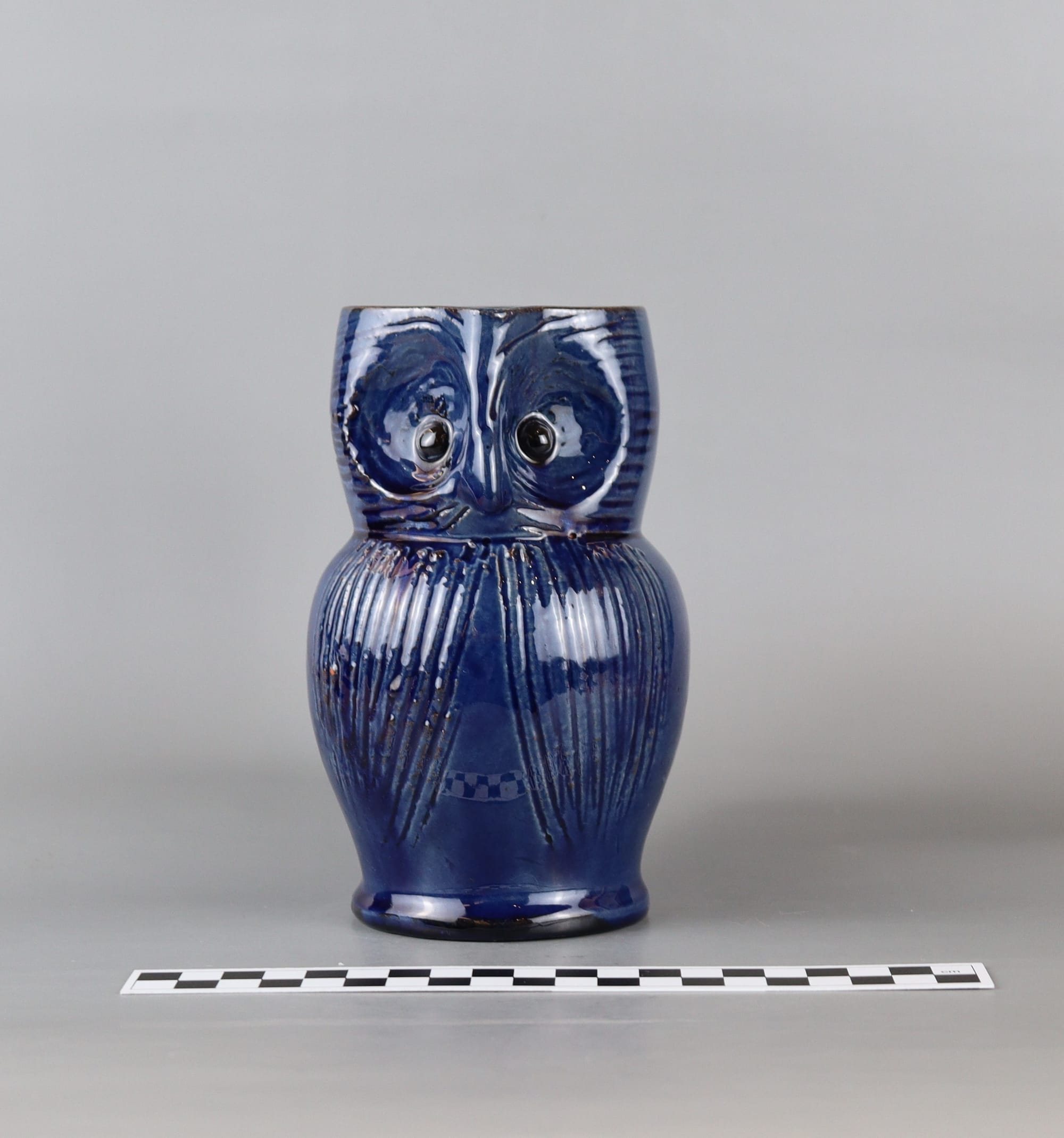
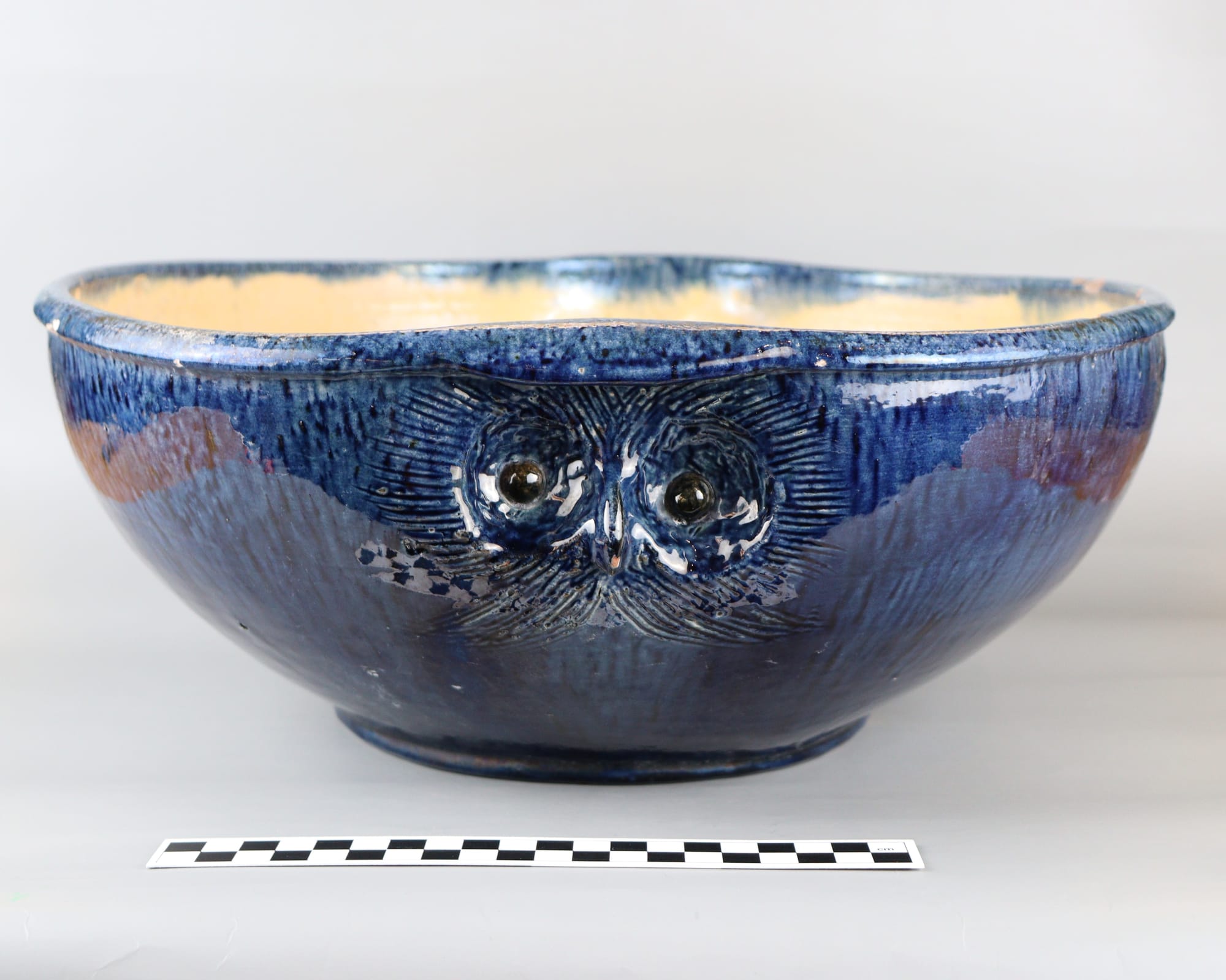
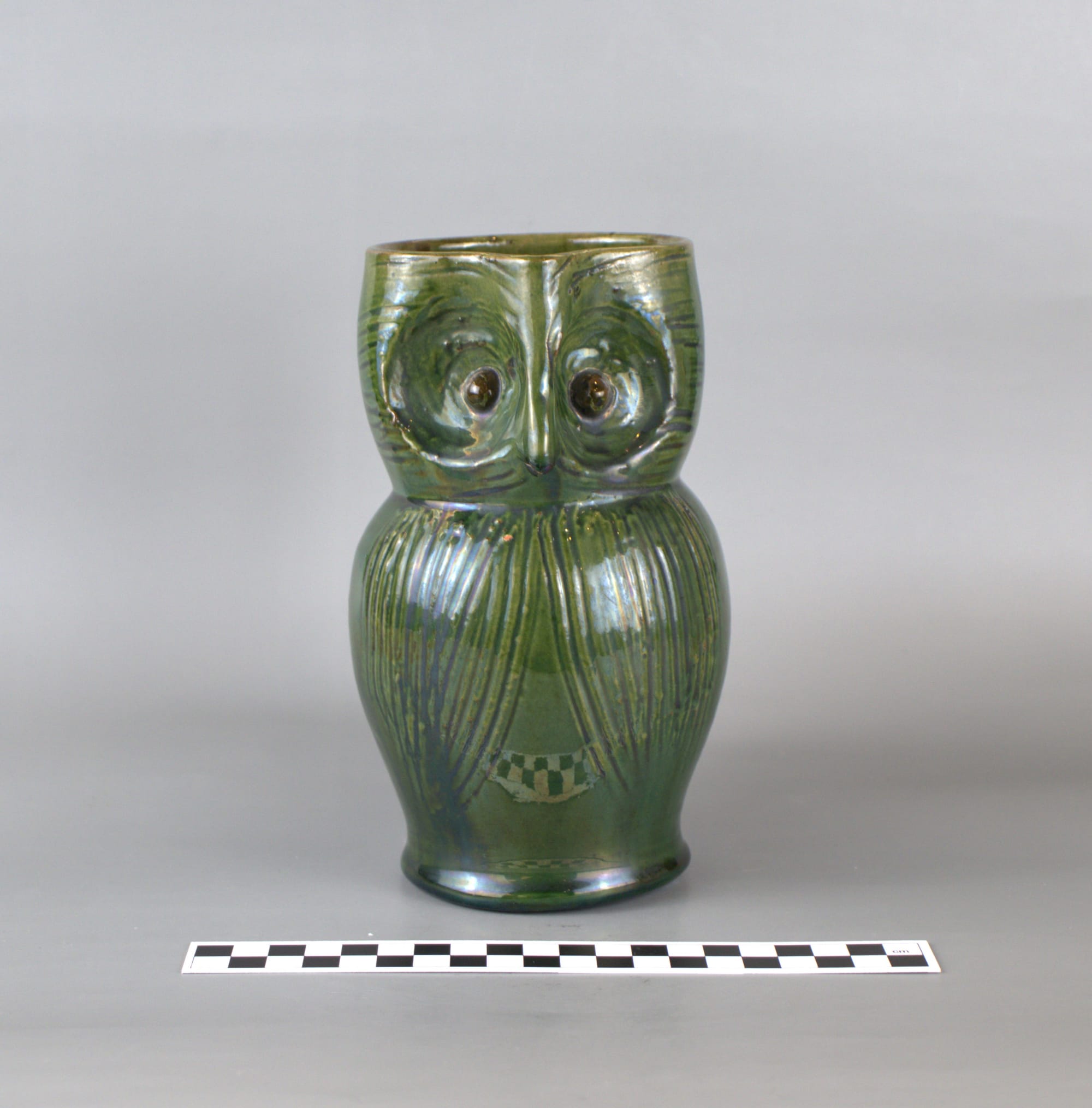
The three Owl wares on display at the Allen Gallery, the bowl features three little owl faces placed evenly around the outside.
Farham Pottery
A visit to the site of Farnham Pottery will transport you back in time – although the site is occupied by contemporary potters today, it still retains the character of an industrial site set up in 1873.
Absalom Harris founded the pottery at Wrecclesham in the 19th century. The Farnham area, with its abundant supplies of clay, had many small local potteries, with most of the pottery wares destined for the London market.
At the Wrecclesham site there was plenty of space to build the workshops and a large area for a clay pit. Except for the original house and its outbuildings, the workshop buildings were largely built from the products of the pottery itself. Bricks were fired and roofs, which are lightly timbered, were mostly clad with the potteries’ own tiles.
Initially, Farnham Pottery produced mainly terracotta horticultural, architectural and domestic items. Then in the 1880s, a copper based green glaze was developed for the artist Birket Foster. He had brought a green French vase to the pottery and asked Absalom if the vase could be copied. The trial pieces sold well and became known as Farnham greenware.
The Allen Connection
In November 1889, William Herbert Allen (namesake of the Allen Gallery) became the new Master of the Farnham School of Art. He quickly became interested in the work of the pottery. His students, mainly ladies, were soon decorating many of the greenware items using the sgraffito technique. This involves placing a layer of glaze or slip on a piece of pottery, leaving it to dry, and then using a tool to scratch a design which creates contrasting images, patterns, and texture, revealing the colour of the clay below. It’s a technique that’s been in use since the 10th century, although experts debate where it originated.
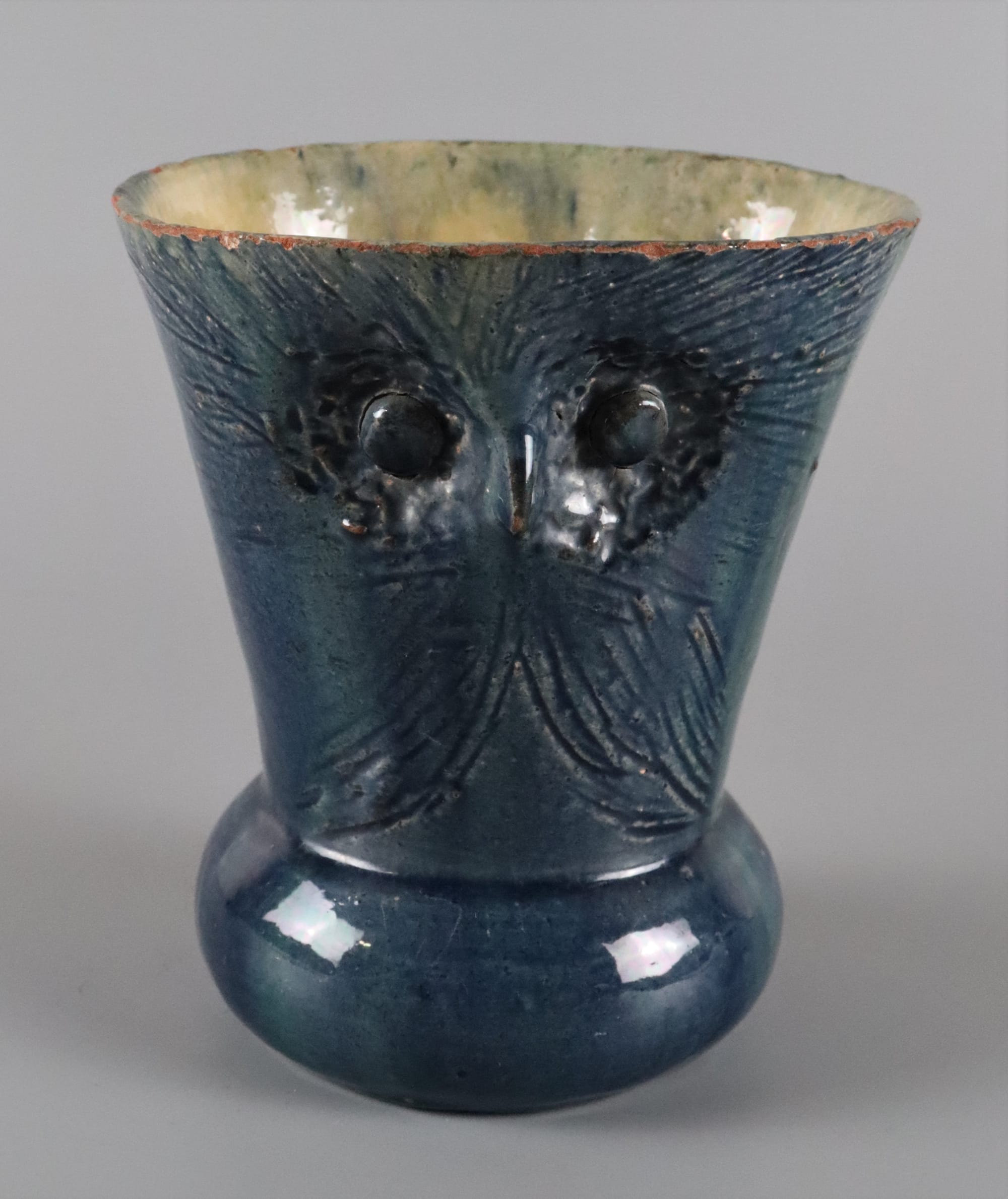
Farnham Pottery greenwares attracted the attention of Liberty & Co in Regent Street, London, which then sold the pottery from the 1890s until the mid 1920s. This fine art pottery established itself in other major markets in the fashionable London department stores, including Heals and Harrods. Supplies of these goods were despatched regularly by horse and cart to Farnham Station from where they were conveyed to London. The early 1900s design books of the Farnham Pottery show over 180 decorative and domestic pottery shapes, and many garden ware designs. Some were designed by William Allen; he designed for the potteries from the turn of the century until 1943.
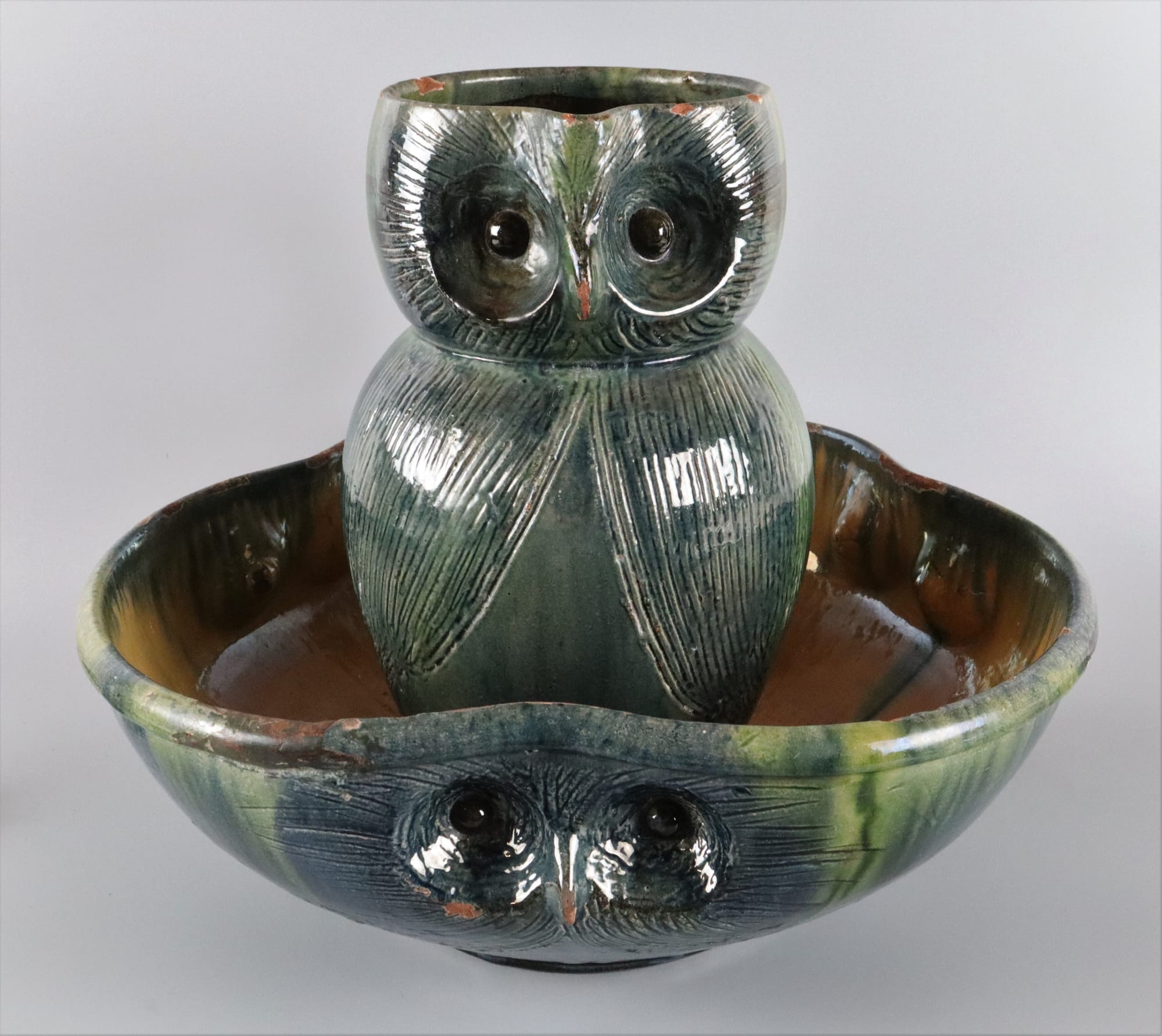
After the war there was a shortage of skilled workers, which meant expansion of the business, or even returning to pre-war levels was not possible. Despite this, the popularity of Farnham owl ware meant it continued to be produced up until the 1950s.
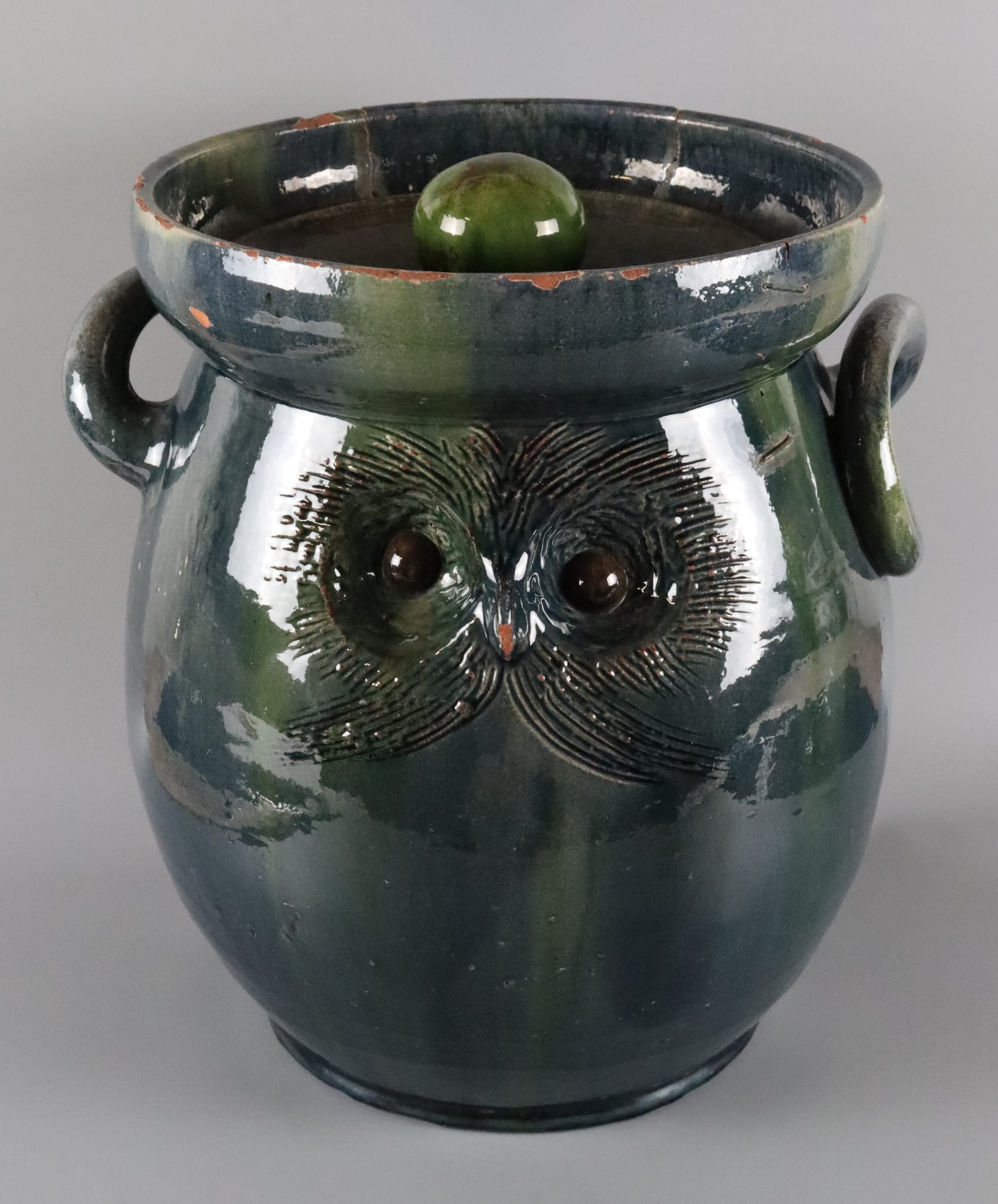
The potteries remained in the Harris Family until the late 1990s, as a small business, very much scaled back from the days it was supplying to big department stores. The land containing the clay pits was sold to developers for housing, and concern was building that the workshops would also be sold. In 1998, the buildings were bought by the Historic Buildings Preservation Trust and a programme of restoration began. The workshops are now home to three craft organisations and welcome all makers from beginners to professionals.
For more information about our Rediscovering the Allen Gallery project, click here.






